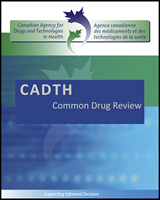Australia’s PBAC rejected the submission for the use of ingenol mebutate for the “field treatment of solar keratosis3 of the face and scalp in patients where topical fluorouracil 5% is clinically inappropriate … on the basis that the clinical claim that treatment of solar keratosis with ingenol reduces the risk of squamous cell carcinoma was not quantified, that the cost-effectiveness in the PBS setting is unknown, and that the utilisation is uncertain, and is likely to be high and substantially underestimated in the submission.”
The manufacturer undertook an indirect comparison of ingenol mebutate and imiquimod 5% based on five trials; PEP005-015, PEP005-016, and PEP005-025 (ingenol), and Jorizzo 2007 and Korman 2005 (imiquimod). The PBAC noted that the results of the indirect comparison showed that the relative risk of the primary outcome measure of complete clearance with ingenol was not significantly different than that of imiquimod.7
As of March 2013, an evidence summary by the National Institute for Health and Care Excellence (NICE) indicated that ingenol mebutate gel was not considered appropriate for a NICE technology appraisal and is not currently planned into any other work program.8 These evidence summaries provide summaries of key evidence for selected medicines that are considered to be of significance to the National Health Service (NHS). The strengths and weaknesses of the relevant evidence are critically reviewed within this summary to provide useful information for those working on the managed entry of new medicines for the NHS. However, it is important to note that this summary is not NICE guidance.
The Scottish Medicines Consortium (SMC) accepted the application for ingenol mebutate for cutaneous treatment of non-hyperkeratotic, non-hypertrophic AK in adults because the balance of costs and benefits meant that the SMC considered it offered value for money.9
- 3
Solar keratosis is another term for actinic keratosis

